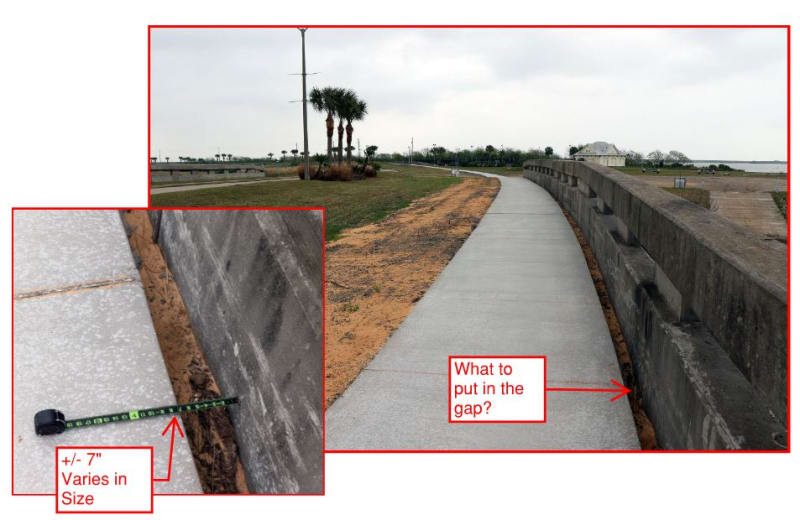JoelTXCive
Civil/Environmental
I have inherited a project from another engineer.
We need to provide a filler material between a new sidewalk and an old bridge rail.
We are worried that if we just fill it with sand or select fill, then weeds will grow.
My two best ideas are stabilized sand; or maybe even asphalt?
Does anyone have any suggestions? (see below)

Thank you in advance!
We need to provide a filler material between a new sidewalk and an old bridge rail.
We are worried that if we just fill it with sand or select fill, then weeds will grow.
My two best ideas are stabilized sand; or maybe even asphalt?
Does anyone have any suggestions? (see below)

Thank you in advance!
